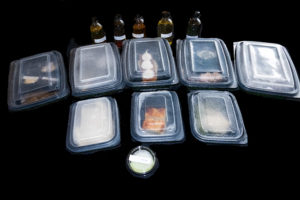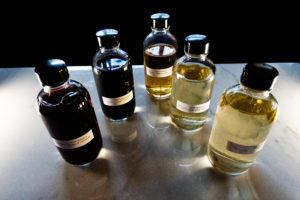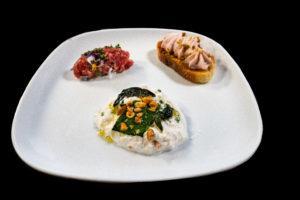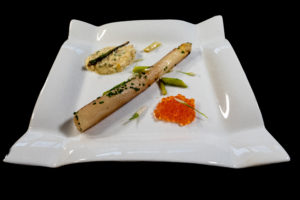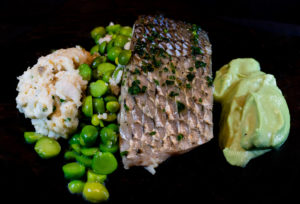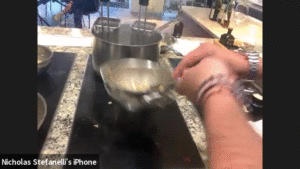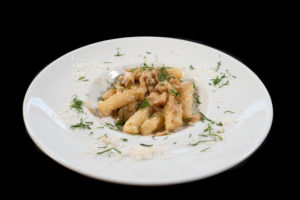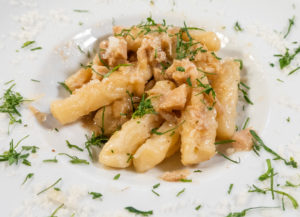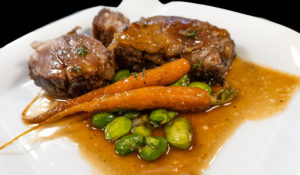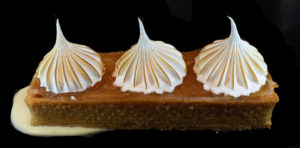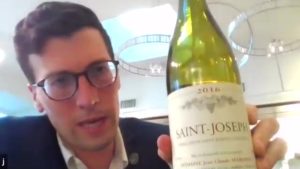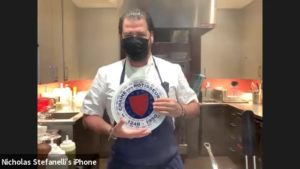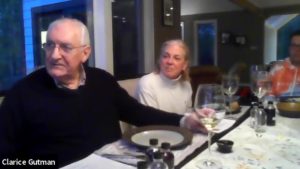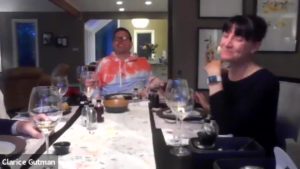Marvelous Masseria
Chef/owner Nicholas Stefanelli and Sommelier John Filkins of Masseria wowed the Bailliage of Greater Washington, DC, with a five-course dinner with wine pairings all delivered to members’ and guests’ homes across the region on April 22, 2021. Chef Stefanelli opened Masseria in Washington’s Union Market district in 2015 to widespread acclaim, gaining prompt inclusion among The Washington Post’s and Washingtonian magazine’s selections for the city’s best restaurants. The following year, Masseria earned a coveted star in Michelin’s first DC guide, an honor it has retained ever since. In 2018, Restaurant Association of Metropolitan Washington (RAMW) named it the “Formal Fine Dining Restaurant of the Year.”
The name “Masseria” in Italian refers to the centuries-old agricultural estates of the Puglia region in southeastern Italy, the area from which the chef traces his family’s heritage. The masseria and their traditions of locally crafted food and warm hospitality are the inspiration for the chef’s cuisine and restaurant.

Chef Stefanelli grew up in the Maryland suburbs of Washington and graduated from L’Academie de Cuisine, in Gaithersburg, Maryland. Included in his impressive resume is work with Roberto Donna at Galileo, Fabio Trabocchi at Maestro and Fiamma, and Thomas Keller at the French Laundry. In 2010, the RAMW named him the 2010 Rising Star and he was nominated by the James Beard Foundation for its Rising Star award. John Filkins, Masseria’s beverage director, is a certified sommelier and winner of the Chaîne des Rôtisseurs’ Best Young Sommelier Mid-Atlantic competition in 2013 and 2014 and third-place finisher in the national competition in 2014.

Bailli Judy Mazza opened the event, speaking for everyone in noting her anticipation to enjoy “Masseria a Casa.” Bailli Délégué des États-Unis Bertrand de Boutray joined the Zoom session from his home in Seattle and offered his greetings and gave kudos to Judy and members of the bailliage for leading and supporting one of the most dynamic Chaîne chapters in the country. During the introductory remarks, the chef’s canapés – crostini and mortadella mousse, burrata and ramp pesto, and beef tartare with Parmigiano cream – whetted appetites for the sumptuous spring meal to follow.
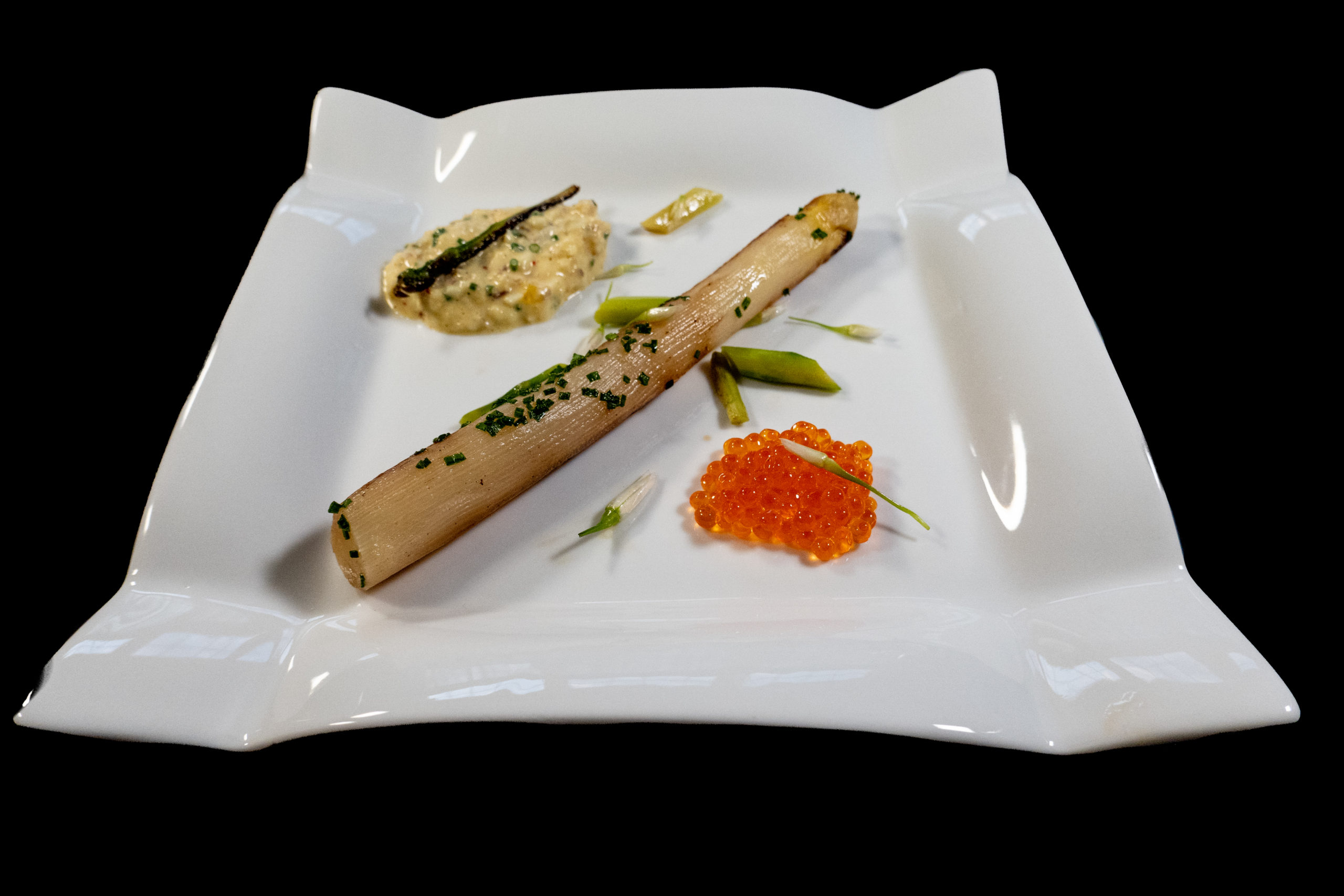
Chef Stefanelli described the first course as one of his favorites for a chilly spring day – roasted giant white asparagus from Holland with Russian egg salad, trout roe, and chive blossoms. The chef explained that he enjoys the temperature contrasts between the warm asparagus and the room temperature egg and roe, a combination that gives this dish a wonderful saltiness and meatiness. The 2018 Pieropan Soave with notes of almond, deep fruit, and ample acidity, was an outstanding aperitif. This brilliant straw-colored wine from the Veneto region of northern Italy, is 85% Garganega and 15% Trebbiano di Soave and is fermented and aged on the lees in glass-lined cement tanks.

The fish course showcased poached Chesapeake Bay rockfish, presented with branade, peas, lemon, and tarragon. The branade – a mix of salt cod, olive oil, and potatoes best known in the Mediterranean regions of France and Spain – was a delicious accompaniment to the delicate fish, while the tarragon added refreshing flavors to the peas. The vibrant fruit, hint of minerality, and herbal notes of the 2019 Venica ‘Ronco delle Cime’ Friulano created a stunning pairing for this course. This single vineyard wine is produced from 100% Friulano grapes from vines averaging 50 years old and is fermented on its lees in stainless steel. It is one of two cru wines from the Venica & Venica winery, located in the Province of Gorizia in the very northeast corner of Italy on the border with Slovenia.
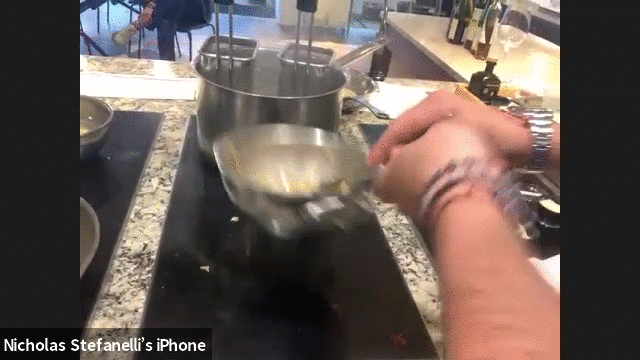
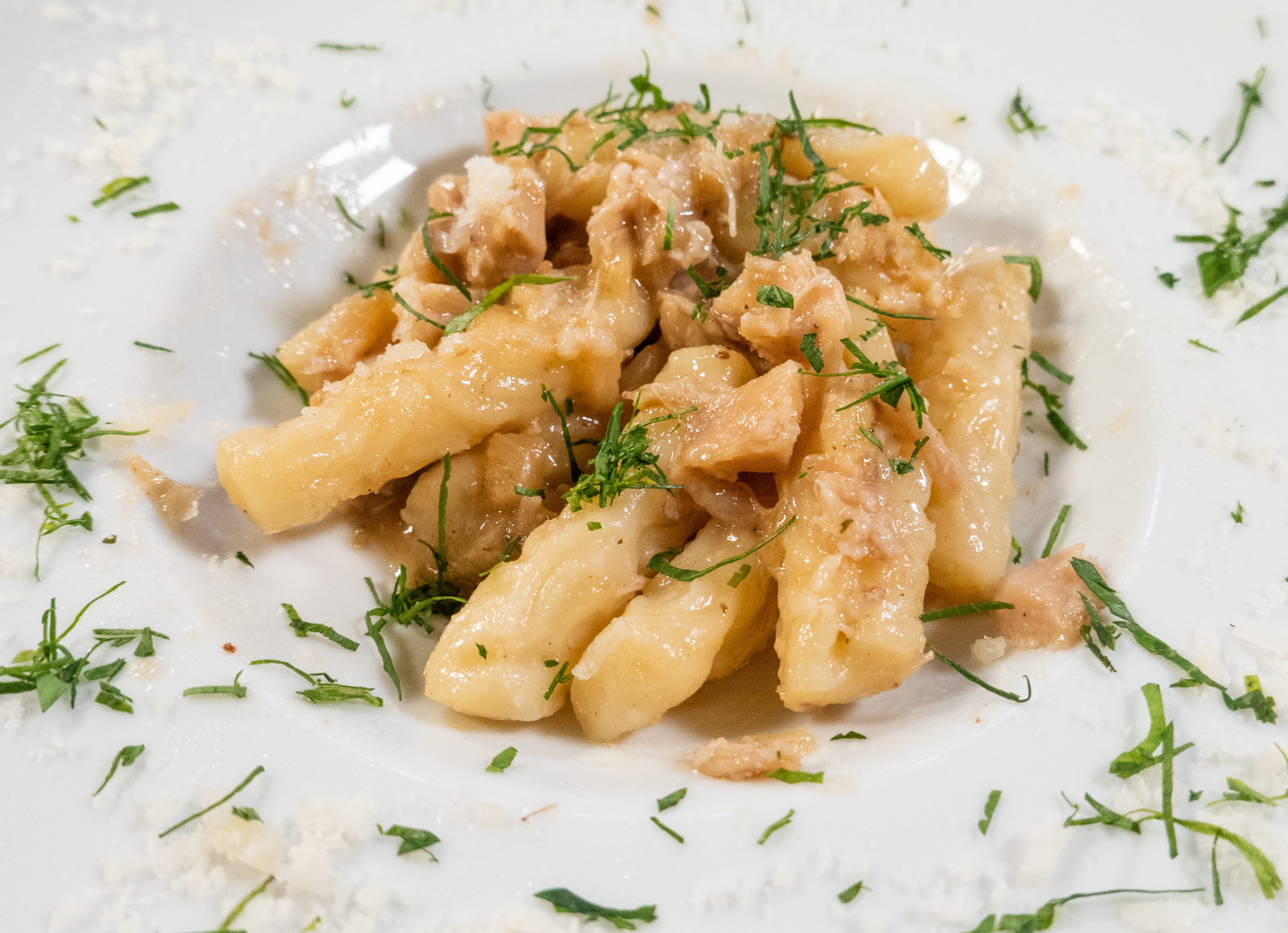
Chef Stefanelli’s pasta course was a highlight of the evening. He hand-rolled his Puglian strascinati to create a wonderfully chewy pasta with dimples that held generous amounts of rabbit ragu with porcini mushrooms and Parmigiano Reggiano and finished with butter and parsley. The chef noted that the rabbit comes from a small farm in southern Virginia. The 2006 Balgera Rosso di Valtellina was an outstanding selection to accompany this most satisfying course. From along Lake Como in the Lombardy region of northern Italy, this wine is 100% Nebbiolo, cultivated in steep, south facing vineyards that protect the grapes from cold winds and create a microclimate optimal for ripening. This lightly colored red wine is fermented with indigenous yeasts, and aged for one year in concrete tanks followed by 8 years in large Slovenian oak barrels, resulting in earthy notes that nicely highlighted the rabbit and mushrooms
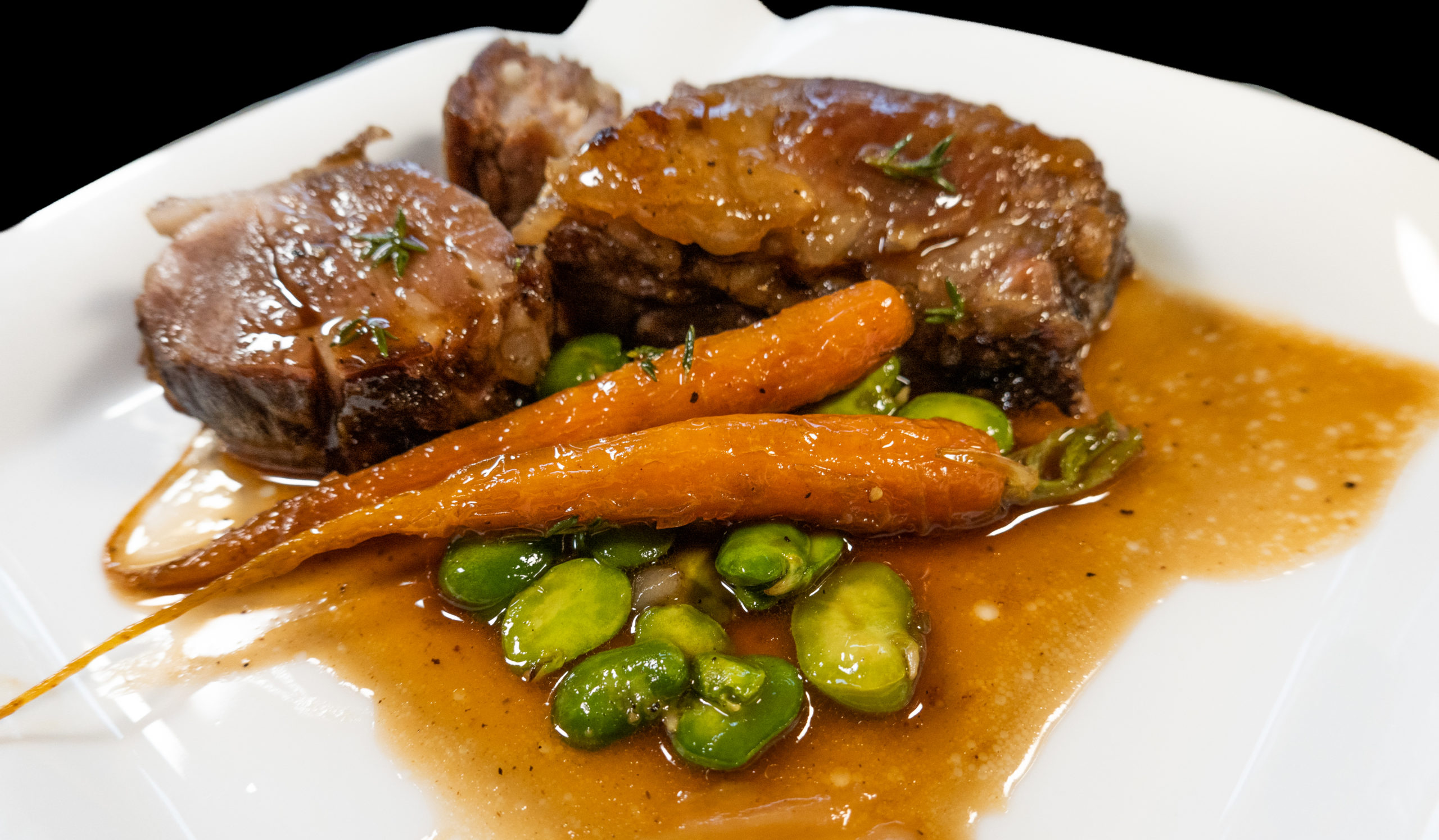
For the final savory course, the chef’s slow-roasted spring lamb was spectacular. He began with the neck, shoulder, and breast of Halal raised and slaughtered spring lamb from a small co-op of farmers in the Shenandoah Valley. He salted the meat overnight and rinsed it before beginning six hours of roasting with an hour at 350°F. He then lowered the temperature to 175° and raised it by 25° each hour until the oven reached 300°. In the roasting pan with the lamb were whole garlic cloves, onion halves, thyme, and white wine, basted on the meat as it cooked. As the temperature increases, the chef explained, liquid is released from the lamb and bones, creating the foundation of a rich sauce. Confit carrots, fava beans, roasted garlic, black pepper, and thyme completed the composition. The sommelier paired the lamb with 2016 Jean-Claude Marsanne St. Joseph. From the northern Rhône Valley of France, this Syrah is produced with grapes from forty-year-old-vines and is fermented in stainless steel vats then aged for 12 months in oak barrels. This old-school wine was dense and savory with notes of dark fruit and minerality reflecting its outstanding terroir. It was superb with the chef’s luxuriously flavorful and incredibly tender lamb.
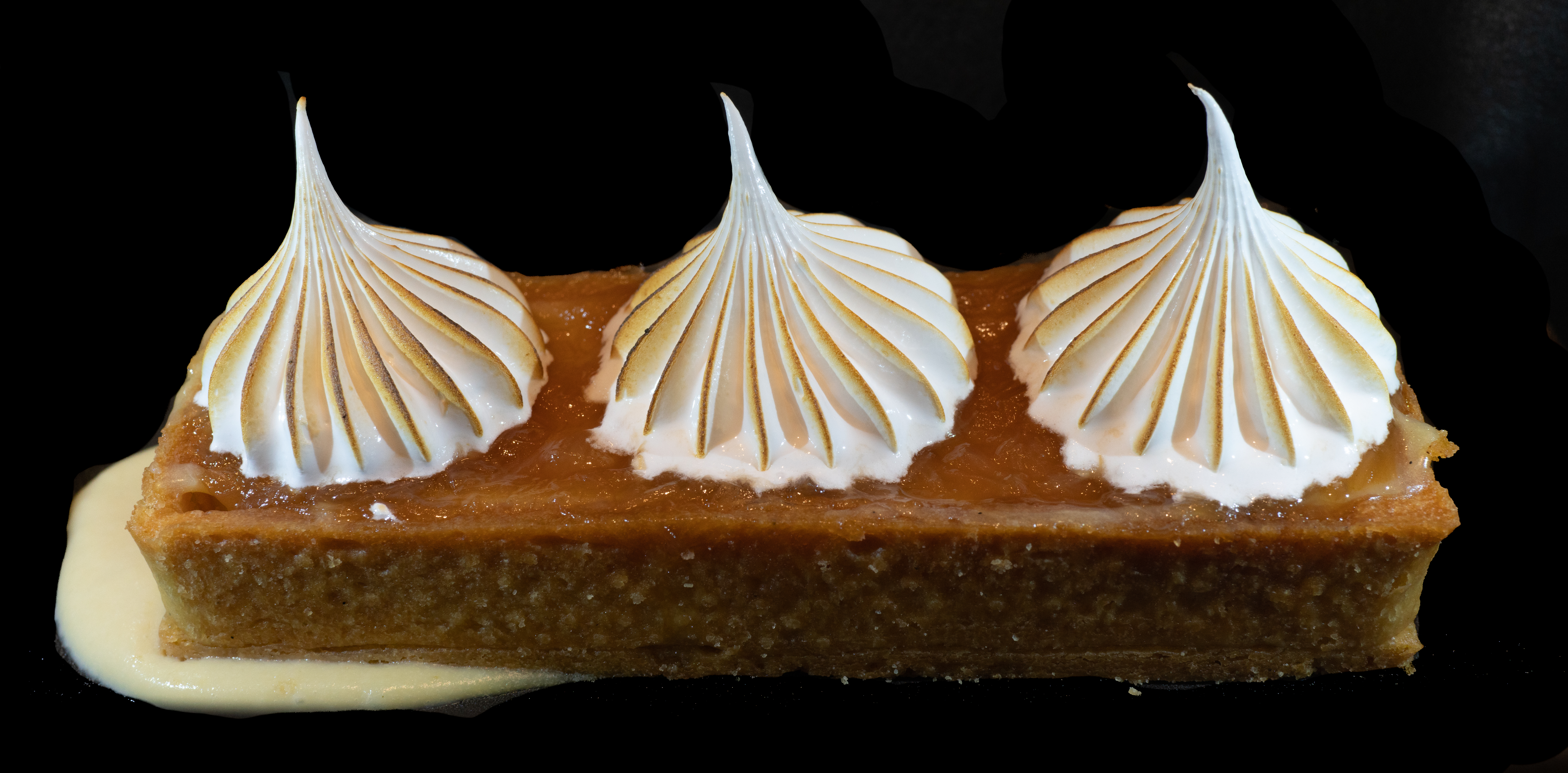
Dessert was a refreshing and delicious Meyer lemon curd crostata with rhubarb, meringue, and tonka bean Anglaise. Interestingly, Tonka beans are not sold in the U.S. as the USDA considers them toxic. But the chef loves the flavor of Tonka beans and he assured diners that it would take huge quantities of them to ingest any harmful amount of the toxins. Accompanying dessert was 2015 Barboursville Malvasia ‘Paxxito’, produced less than 100 miles southwest of Washington. The Paxxito method of making sweet wines dates from the 5th century BCE. For Barboursville Vineyard’s version, Moscato Ottonel and Vidal Blanc grapes are harvested early when they are still quite acidic and allowed to air-dry for two to three months, concentrating their sugars and acidity. They are then pressed, and fermentation begins spontaneously with native yeasts that have been transferred to the fruit by the estate’s own bees. The wine is fermented in small neutral oak barrels for more than two years, with flavors enriched by the lees resulting in a complex, deep gold wine. The 2015 vintage of Barboursville’s Paxxito was exceptional, earning the estate multiple gold medals. It was a brilliant counterpoint to the tart fruit flavors of the dessert.
As the evening concluded, members and guests complimented Chef Stefanelli on a truly memorable dinner. Vice Conseiller Culinaire François Dionot, under whom the chef studied at L’Academie de Cuisine, remarked how “it’s magic” that the chef can deliver dinner hours in advance and miles away and still create a Chaîne- and Michelin-caliber experience – a testament to the chef’s creativity, ingenuity, and skill. Participants also commended sommelier John Filkins on his inspired selections of wine, each of which paired flawlessly with its course. To commemorate the occasion, Bailli Judy Mazza presented the chef with a Chaîne plate (which had been delivered to the restaurant earlier).


